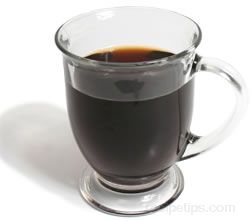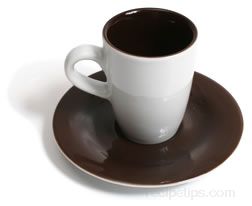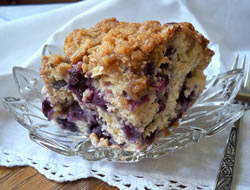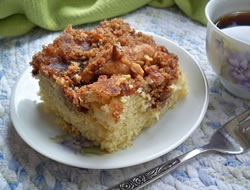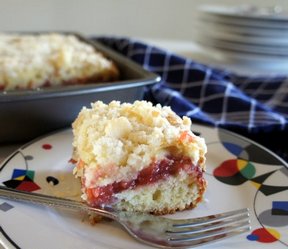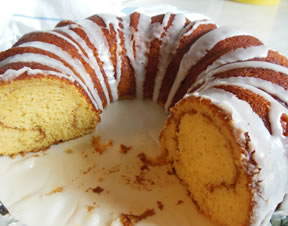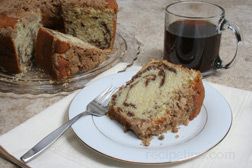|
Coffee Grinder A device that is used to grind whole coffee beans into a suitable size for brewing. Manually operated coffee grinders require that a hand crank be turned in order to move blades that grind the coffee beans. Electric models are available that do the job more quickly and may be more convenient to use.
|
|
Coffeemaker An appliance or piece of kitchenware that typically accomplishes the task of brewing the popular drink produced from ground cocoa beans. Made to operate with or without electricity, Coffee Makers are available in a variety of different models, some brewing only coffee while others are built as multipurpose brewers with multiple functions. The multipurpose coffee makers not only brew traditional coffee, but may also be built to brew espresso coffee, lattes, cappuccino, and other similar drinks.
Brewing glassware, such as a French coffee press, are built to hold grounds in the bottom of the container. Hot or boiling water is added to the container holding the grounds, allowing the grounds to rise up toward the top of the water. Unlike a drip coffeemaker with a percolator, the plunger mechanism (the Press) is manually pushed downward so the grounds are slowly moved through the water to make the coffee and then are held in place at the bottom of the glassware container so only the rich coffee beverage can be poured.
Many multipurpose drip coffeemakers are built with only simple functions that may include simple sets of timers or clocks for functions related to the clock. However, other features of coffeemakers can be more extensive which may include some of the following features:
Since there are many different models with numerous features, before a purchase decision is made it is always best to consider the types of beverages desired and the features that are of the most value for ordinary daily use. Coffeemakers that simply make single cups of coffee to machines that perform a wide variety of functions, each has its purpose and will provide years of good use when properly maintained. |
|
Typically made from paper or fine wire mesh, this kitchen utensil holds coffee grounds so water can pass through the contents into a receiving pot, such as a coffee pot. Working as a strainer, the coffee filter keeps the ground coffee particles together so the water can circulate around the particles (grounds) to become infused with the particle oils that flavor the water dropping through the filter and into the pot. Coffee filters made from paper are disposable while the wire mesh filter, made from stainless steel is reusable. The mesh filter is formed into either a basket shape or a cone shape to fit the various types of coffee makers being produced.
|
|
French Coffee Press
An alternate use for this pot is to use it as a hydrator to moisten dried foods such as chiles, mushrooms or tomatoes. Fill the press with the amount of water desired, placing the dried foods into the water and keeping them below the water level with the plunger. This utensil is also known as a French press coffee maker and a plunger pot. |
|
A large tea or coffee pot most often used for making greater quantities of beverages than the standard sized coffee pots. Made with a spigot that dispenses single or continuous streams of liquid, the Beverage Urn will typically brew 10 to 50 cups depending on size. Polished aluminum and stainless steel are the two most common materials used to manufacture a Beverage Urn. A tight fitting or twist lock lid, a brew basket and a detachable electrical cord are all included with the Urn, making it easy to clean and maintain. An Urn is generally used to serve hot beverages for buffets, holiday gatherings, brunches, meetings, and a variety of events. |
| Frother
Also referred to as a milk frother this handheld device is used to agitate liquids into an airy mixture of bubbles and foam. The frother is often used to whip hot or cold milk into a thick foam that is added as a topping to cappuccinos, lattes, Irish, and Italian coffee recipes as a flavor enhancement and garnish for coffee drinks. In many instances, this utensil can also be used to whip chocolate milk, hot cocoa and other beverages as well as minor mixing duties with ingredients such as clear liquids, thin sauces and light dressings. A frother may be manually activated, it may be powered by batteries or it may use electrical power to create the foam.
There are several common types of battery operated frothers, some with small wire whisks or others with small propeller blades. Each is effective for agitating the liquid to create a thick foamy froth or for simply blending easily blended solutions. As liquids are frothed with a propeller frother, this type of utensil may be slightly more damaging than a wire whisk to some of the surfaces of containers holding liquids to be frothed. However, the propeller frother may be able to blend and foam a wider variety of liquids or ingredients without being overworked as may occur with a fine wire whisk type of frother.
As a general rule, heavier liquids, such as cream or whole milk, will provide a thicker foam than fat-free or low-fat milks. However, the lighter liquids such as low-fat milk can be foamed if the reduced-fat alternative is desired and this type of milk will provide a very nice froth. When steam is used to create a froth, the result is a heavier textured mixture, thicker in consistency that may be slightly harder to digest for some. Thus, lighter froths which are typically made without steam can also provide a nice alternative for those preferring a lighter texture. The best froth is made when cold milk temperatures range from 32ºF to 40ºF (0ºC to 4ºC) or warm milk temperatures reach a temperature of 140ºF (60ºC). |
Loading
Coffee Making Equipment

Provided By
RecipeTips
RecipeTips

Loading
There currently aren't any reviews or comments for this article. Be the first!
Advertisement
Advertisement

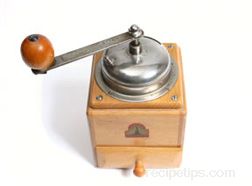


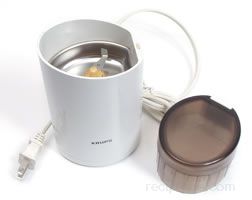
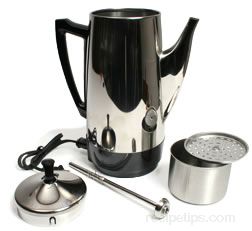 Single purpose coffeemakers may consist only of stovetop pots, brewing glassware, such as a French Coffee Press, or fully electric makers with brewing stations for single cups or a pot. Stovetop pots for making coffee or tea only are configured with a percolator and drip basket that fits into the pot so the coffee grounds can be held in the basket while the water in the bottom of the pot is heated, forced up the percolating tube into the basket, and then allowed to filter through the grounds as it drips back to the bottom of the pot. This type of coffeemaker may also be referred to as a stovetop drip coffeemaker. Similarly, stovetop coffeemakers can be purchased for making cappuccino, latte or espresso coffee. Water is placed in the lower section of the coffeemaker and the ground coffee is added to filter basket. A pitcher situated at the top can be filled with milk so as the water is heated, the pressure of the steam not only brews the espresso but also mixes or infuses the beverage with either frothed or steamed milk.
Single purpose coffeemakers may consist only of stovetop pots, brewing glassware, such as a French Coffee Press, or fully electric makers with brewing stations for single cups or a pot. Stovetop pots for making coffee or tea only are configured with a percolator and drip basket that fits into the pot so the coffee grounds can be held in the basket while the water in the bottom of the pot is heated, forced up the percolating tube into the basket, and then allowed to filter through the grounds as it drips back to the bottom of the pot. This type of coffeemaker may also be referred to as a stovetop drip coffeemaker. Similarly, stovetop coffeemakers can be purchased for making cappuccino, latte or espresso coffee. Water is placed in the lower section of the coffeemaker and the ground coffee is added to filter basket. A pitcher situated at the top can be filled with milk so as the water is heated, the pressure of the steam not only brews the espresso but also mixes or infuses the beverage with either frothed or steamed milk.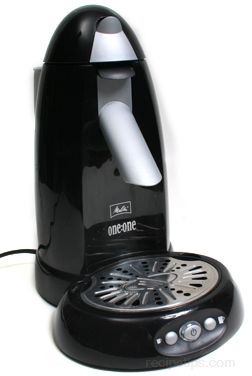 Single purpose coffeemakers that brew a single cup or a pot of coffee are common for those desiring only tea or coffee without other beverage options. Single cup brewers are best for making individual servings quickly and easily with a minimum of effort. Disposable packets of premeasured amounts of coffee or tea can be added to the brewing basket as well as fresh coffee grounds. Most often, single cup coffeemakers have dial settings that allow for variations in water volume for smaller or larger cup sizes.
Single purpose coffeemakers that brew a single cup or a pot of coffee are common for those desiring only tea or coffee without other beverage options. Single cup brewers are best for making individual servings quickly and easily with a minimum of effort. Disposable packets of premeasured amounts of coffee or tea can be added to the brewing basket as well as fresh coffee grounds. Most often, single cup coffeemakers have dial settings that allow for variations in water volume for smaller or larger cup sizes.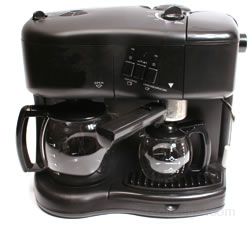 Some of the features of coffeemakers with capabilities to make espresso, cappuccino and latte may include many of the features listed for traditional coffeemakers as well as the following:
Some of the features of coffeemakers with capabilities to make espresso, cappuccino and latte may include many of the features listed for traditional coffeemakers as well as the following: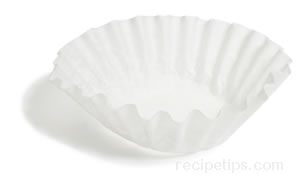 Coffee Filter
Coffee Filter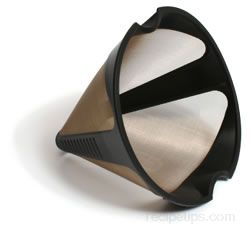
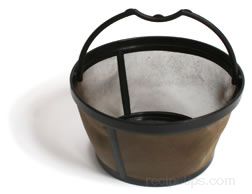
 A kitchen device used for brewing coffee. It consists of a cylindrical glass pot and a plunger mechanism that has a metal mesh screen at one end and a handle at the other. Between the handle and the screen is a lid with a hole in the center through which the plunger can move. Ground coffee is added to the pot followed by boiling water. The coffee is allowed to steep for approximately 4 minutes and then the plunger assembly is inserted and the lid is placed on the top of the pot. The screen end of the plunger is the same diameter as the pot, so as the plunger is slowly pushed into the pot, the screen pushes the coffee grounds to the bottom of the pot, leaving fresh filtered coffee above the screen.
A kitchen device used for brewing coffee. It consists of a cylindrical glass pot and a plunger mechanism that has a metal mesh screen at one end and a handle at the other. Between the handle and the screen is a lid with a hole in the center through which the plunger can move. Ground coffee is added to the pot followed by boiling water. The coffee is allowed to steep for approximately 4 minutes and then the plunger assembly is inserted and the lid is placed on the top of the pot. The screen end of the plunger is the same diameter as the pot, so as the plunger is slowly pushed into the pot, the screen pushes the coffee grounds to the bottom of the pot, leaving fresh filtered coffee above the screen. 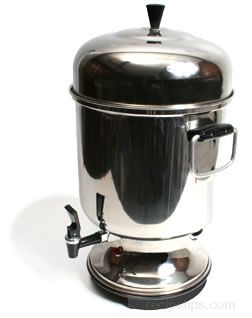 Beverage Urn
Beverage Urn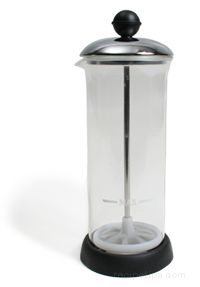 A manual frother is typically designed as a hand pump utensil consisting of a container with a fine mesh screen on one end and a pump handle attached to a plunger on the other. Several types of manual frothers are manufactured for frothing. Some are made as self-contained, single stainless-steel or plastic chambers that are immersed into a glass of milk for frothing. Others are made as canister frothers with glass containers that hold the contents to be frothed and a pump built into the container. Those that are built as self-contained utensils have a pump handle plunger that fits into the stainless container. As the pump is pulled upward it draws air and liquid into the stainless steel chamber of the frother. The pump plunger is then moved in a downward direction to force out the liquid and air through the fine screen so the air and liquid mixture becomes agitated to create a foam filled with tiny bubbles as it exits the frother. Canister frothers work in the same manner of pumping the contents to draw air into the milk in order to froth it. The canister frother works best when filled with only a third of the container filled with milk to allow for the expansion of the froth.
A manual frother is typically designed as a hand pump utensil consisting of a container with a fine mesh screen on one end and a pump handle attached to a plunger on the other. Several types of manual frothers are manufactured for frothing. Some are made as self-contained, single stainless-steel or plastic chambers that are immersed into a glass of milk for frothing. Others are made as canister frothers with glass containers that hold the contents to be frothed and a pump built into the container. Those that are built as self-contained utensils have a pump handle plunger that fits into the stainless container. As the pump is pulled upward it draws air and liquid into the stainless steel chamber of the frother. The pump plunger is then moved in a downward direction to force out the liquid and air through the fine screen so the air and liquid mixture becomes agitated to create a foam filled with tiny bubbles as it exits the frother. Canister frothers work in the same manner of pumping the contents to draw air into the milk in order to froth it. The canister frother works best when filled with only a third of the container filled with milk to allow for the expansion of the froth.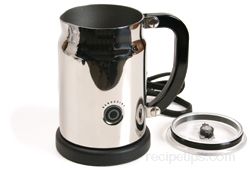 Electrical frothers are built as an accessory to an appliance, such as a coffeemaker or as a self-standing frother with a blender-like apparatus built within to whisk the milk into foam. The frother built on coffeemakers uses heated water from a separate holding tank to provide steam that is forced out the frothing stem as the water heats and agitates the liquid being foamed. Many cappuccino and espresso coffeemakers are equipped with built-in frothers. The blender-like frothers are made to hold 2 to 4 cups of liquid to be frothed at one time in order to produce larger volumes of foam. With an appearance similar to a food processor, this type of frother will heat the milk and then quickly agitate it into foam. This type of frother is often used in commercial kitchens or in homes where the frother is used several times a day for more than one cup of froth.
Electrical frothers are built as an accessory to an appliance, such as a coffeemaker or as a self-standing frother with a blender-like apparatus built within to whisk the milk into foam. The frother built on coffeemakers uses heated water from a separate holding tank to provide steam that is forced out the frothing stem as the water heats and agitates the liquid being foamed. Many cappuccino and espresso coffeemakers are equipped with built-in frothers. The blender-like frothers are made to hold 2 to 4 cups of liquid to be frothed at one time in order to produce larger volumes of foam. With an appearance similar to a food processor, this type of frother will heat the milk and then quickly agitate it into foam. This type of frother is often used in commercial kitchens or in homes where the frother is used several times a day for more than one cup of froth.